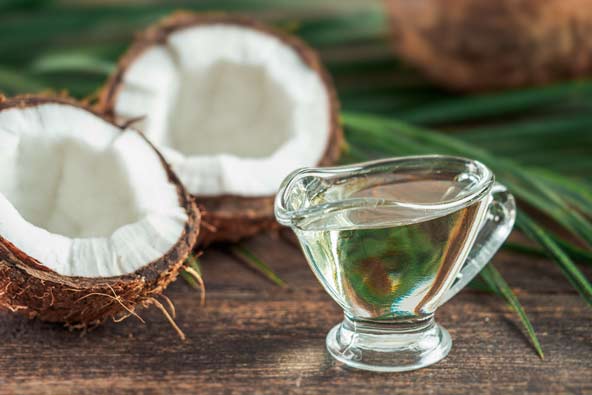Fatty acids are an essential part of our diet and play a crucial role in the body’s functions. They are categorized based on their chemical structure and level of saturation. Here is an overview of the different types of fatty acids, their properties, and their significance for health.
1. Saturated Fatty Acids
Structure and Sources: Saturated fatty acids have no double bonds between the carbon atoms in the fatty acid chain, which typically makes them solid at room temperature. They are primarily found in animal products such as meat, butter, and cheese, as well as in certain vegetable oils like coconut and palm oil.
Health Effects: Saturated fats are necessary for the body to effectively use essential fatty acids. Although saturated fats have long been considered unhealthy, recent research by leading scientists suggests that they may not be as harmful as once believed. (1)
2. Monounsaturated Fatty Acids
Structure and Sources: Monounsaturated fatty acids have a single double bond in the fatty acid chain. They are usually liquid at room temperature but can solidify when chilled. Sources include olive oil and nuts.
Health Effects: Monounsaturated fats can help lower LDL cholesterol and raise HDL cholesterol (the "good" cholesterol). They also have anti-inflammatory properties and can improve insulin sensitivity. The polyphenols in olive oil help protect blood fats from oxidative stress.


3. Polyunsaturated Fatty Acids
Structure and Sources: Polyunsaturated fatty acids have more than one double bond in the fatty acid chain, making them “bendy,” or liquid, even at refrigerator temperatures. These fatty acids are found in fish, shellfish, flaxseed oil, sunflower oil, and walnuts.
Types and Health Effects: Polyunsaturated fatty acids are further divided into omega-3 and omega-6 fatty acids.
- Omega-3 Fatty Acids: Found in fatty fish (such as salmon and mackerel), flaxseeds, and chia seeds. They are known for their beneficial properties and play a role in brain health, vision, and cardiovascular health.
Omega-3 consists of EPA and DHA which contribute to several aspects of health:
- Blood Pressure: DHA and EPA help maintain normal blood pressure. The beneficial effect is achieved with a daily intake of 3 g DHA and EPA.
- Brain: DHA supports normal brain function. The beneficial effect is achieved with a daily intake of 250 mg DHA.
- Vision: DHA helps maintain normal vision. The beneficial effect is achieved with a daily intake of 250 mg DHA.
- Heart: EPA and DHA support normal heart function. The beneficial effect is achieved with a daily intake of 250 mg EPA and DHA.
- Blood Pressure: DHA and EPA help maintain normal blood pressure. The beneficial effect is achieved with a daily intake of 3 g DHA and EPA.
- Omega-6 Fatty Acids: Found in vegetable oils (like sunflower and corn oil) and certain nuts and seeds. While essential for body functions, they should be balanced with omega-3 intake.
4. Trans Fats
Structure and Sources: Trans fats are a type of unsaturated fat where the hydrogen atoms are on opposite sides of the double bonds, creating a straight chain that makes the polyunsaturated fat stable in solid form. They can form naturally in small amounts in some animal products but are mostly created industrially through hydrogenation (a chemical process where hydrogen is added to unsaturated fats to make them more saturated) of vegetable oils to increase the shelf life of foods.
Health Effects: Trans fats are very unhealthy and have been shown to significantly increase the risk of cardiovascular diseases by raising LDL cholesterol and lowering HDL cholesterol. Many countries have implemented strict regulations or bans on industrially produced trans fats.


5. MCT Oil
Structure and Sources: MCT oil (Medium Chain Triglycerides) is a type of fat that the body can break down and convert to energy more easily than other fats. The oil is absorbed directly in the intestine and then broken down in the liver into ketones, which can be used as energy instead of carbohydrates. It is often derived from coconut oil or palm oil, consisting of medium-chain fatty acids that are quickly converted into energy by the liver.
Health Effects: MCT oil can provide quick energy and is popular in ketogenic diets, used in smoothies, coffee, and salad dressings. Despite its benefits, it can cause digestive discomfort at higher doses, so it's best to start with small amounts and gradually increase.
C8 Oil or Caprylic Acid: A type of MCT oil composed of medium-chain fatty acids that are quickly converted into energy in the liver. C8 refers to the number of carbon atoms (C for carbon) in the fat chain. Regular MCT oil may contain C8, C10, and often C12, with C8 oil considered the most efficient. It is particularly popular in ketogenic diets and is great for morning coffee to kickstart the day.
References
1. British Medical Journal 2019: WHO draft guidelines on dietary saturated and trans fatty acids: time for a new approach?

